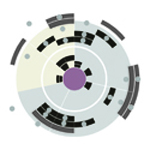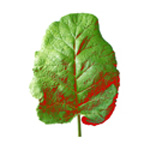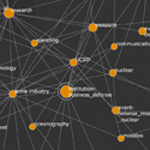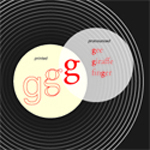KEYWORDS
Couplets, Elizabethan literature, Helen Vendler, keywords, quatrains, relational diagramming, relational mapping, Shakespeare, signified and signifier, sonnets, VT-CAD, word mapping, word networks
ABSTRACT
That rich and emotional inward feeling—where both desire and profoundity meet—is well expressed through the outward form of the sonnet. Sonnets serve as companions in our quest for this type of profoundness; the best sonnets deliver rich, intellectually deep qualities reflecting life’s insights and feelings. Such profoundness may be gained through both general, and close reading. The intellectual depth of this experience is yet more enriched through the incorporative effects of taking in a sonnet sequence (if the author created such). Though we may seek to grasp this “source” element, profoundness, we realize it is externally intangible; we must approach such obliqueness through tools and mentors. The tools are representational models that can direct us toward our aim; the mentors assist us with these tools (directly, or by adding more tools). Our signified thing (in this case, profoundness) is achieved through signifiers (in this case letters arranged into words, making the language of the poem visible, and further arranged through rules and structures agreeably organized to constitute the type of sonnet expected). Shakespeare is literally dead, but he is figuratively alive through the representational strength of the printed page (or digital means of visual and audio rendering).
We physically read Shakespeare’s sonnets (symbols in line) nearly as his contemporaries did in the late sixteenth and the early seventeenth centuries. Such representations are fairly direct pathways to the source. In this paper, we refer to these direct, textual constructs as tier-one representational models. Is it possible to construct representations that yield even greater insight into the author’s conceit? Yes, perhaps, through two approaches, the first by building a better tier-one representation—a representation that more informatively points to the source with less noise.
The second approach is to construct a representation that is more direct in its path to another representation then it is to the source; we refer to this as a tier-two representation. These representations, designed to work in conjunction with other representations, may yield new and valuable intelligence respecting the source. If tier-one representations are the bricks, tier-two representations may allow us to understand the mortar, or view the building the bricks were arranged to compose. Relying most heavily on the research of the gifted critic and close reader of Shakespeare’s sonnets, Helen Vendler, this paper provides a built-out example of what is meant by, and what may be gained through, the reorienting strengths of tier-two representations.
BIOGRAPHY
William M. Bevington currently serves as Associate Professor of Information Mapping in the School of Art, Media, and Technology at Parsons The New School for Design, The New School, New York. He formerly served as the Executive Director for Parsons Institute of Information Mapping, Chairman of the Communication Design department at Parsons School of Design, and various professorial and instructional roles at his Alma Mater, The Cooper Union for the Advancement of Science and Art. He is an information designer and information theorist specializing in creating tools for the rapid assessment of complex data. His first significant project was the Blackout Procedures Manual for Con Edison in 1983, and the last was a major Geospatial Media Mash-up Tool under U.S. government contract entitled the Geospace and MediaTool (GMT). Mr. Bevington has developed toolsets for transit systems applications, stock trading applications, and health management tools as a principle designer at Spire Integrated Design, New York. He has lectured worldwide, illustrated Graphic Designers Production Handbook, co-authored Working with Graphic Designers and Designing with Type with Jim Craig. He is also the author of Typography: The Principles, A Basic Guide to Using Type published by The Cooper Union.
Erik M. Freer is an undergraduate student at The New School in the dual degree program pursuing a BFA from Parsons the New School for Design in Communication Design and a BA from Eugene Lang College the New School for the Liberal Arts in Writing. At Parsons his focus is on Information, Print, and Typography and at Lang his focus is on Poetry and Playwriting, with a minor in Japanese. Erik possesses a deep interest in ideas of mapping and the visual representation information. The Comparing Shakespeare’s Sonnet Sequence project featured in this paper was developed as part of an assignment in Topic: Information Design studio course taught by Professor Bevington. In addition to the project images, Erik contributed associated captions and schematic plans, as well as the sections entitled “Helen Vendler’s Keyword Model” and “Developing the relational device.” Erik dedicates his spare time to any and everything cultural and creative he can produce and or experience.





